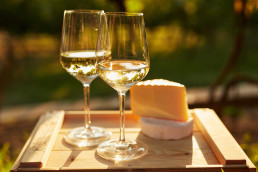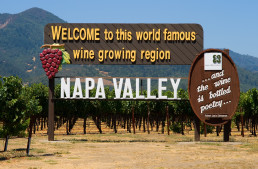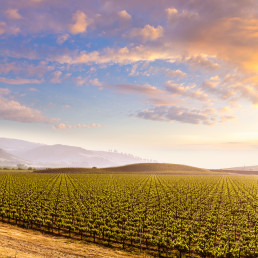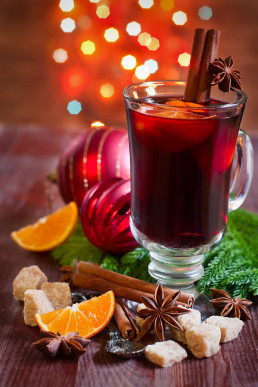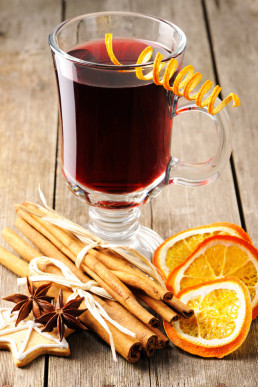In Praise of Boxed Wines
Many people sniff at boxed wines, and not in a good way! They have a really bad reputation, especially among wine snobs; they’re rubbish, they’re paint-stripper, they’re the collected dregs of the previous year’s worst batches, they make you hair fall out (OK, a slight exaggeration there…).
Yes, some boxed wines might be a bit below-par, but then so are some bottled wines. In general, boxed wines are getting better and are coming in from the cold. Here’s a few reasons why:
They’re not all that bad
Some boxed wines are pretty good; others are actually very good. Some smaller wine producers, especially some family-run wineries, send out boxes as well as bottles because it’s cheaper and it’s better for the environment.
A serious advantage of boxed wine is that it doesn’t go off as quickly as a bottled wine does once opened. The fact that the wine is in a foil bag, in a cardboard box, means that sunlight and air don’t get to it so it keeps for a lot longer.
Boxed wines are cheaper per glass
Most boxes hold the same amount as four standard-sized bottles, but for quite a bit less than the average bottle! Most boxes come in at less that $30 - $30 for four bottles of half-decent wine? Come on, get over it!
You just need to – ahem – box clever
What you’re aiming for is a box of wine that’s cheap and good to drink. You can do it, just do your homework first. Think outside the box (OK, that’s enough) and try a new brand or winery – you never know.
Look for a box that contains just one vintage from one vineyard – no mixing, as you could well be looking at those dreaded dregs… If you’re stuck, just ask a store assistant for recommendations.
You’re not buying a mystery substance here, it’s still wine and if it’s well-made and of good quality, there’s no real way to tell during a blind tasting unless you’re a serious wine buff (or a bloodhound). Face it, we’ve all bought duff bottles before…
Anyway, if all else fails and you get that look from Uncle Walt when you turn up to his house with a box, just tell him you’re doing your bit for the environment!
Image Credits
Copyright for the image within this blog post is owned by ‘Rostislav_Sedlacek’, and has been licenced for use on this blog post through Big Stock Photo (stock photo ID: 149951483). For questions relating to this image please contact the copyright owner directly.
Global Warming Comes to Napa Valley
At the start of 2016, unusually mild weather meant that lots of the grapevines in Napa Valley budded in mid-to-late February. The unseasonal warmth and the lack of rain fooled the vines into thinking it was two or three weeks later in the year than it was and so they kicked off early.
Most Valley winemakers agree that their schedules are between two and three weeks ahead, with many saying that 2015’s budding was 10 or so days ahead of normal as well.
This can make grape farmers nervous
Farmers are usually nervous about an early budding, because at this time of year, all it takes is a sudden frost and the entire crop of grapes can be nixed overnight.
It seems, however, that frost is passé these days, with winters warming up just as much as summers. Napa Valley farmers look after their grapes, with special equipment to protect them from frosts, but these huge fans and space heaters may end up on ice themselves if current trends continue.
What does this early budding mean for wines?
No-one knows! 2015’s wines were just fine, and farmers are usually OK with an early bud-break that doesn’t get frosty as it means they’re also ahead of schedule, including an early harvest.
An early budding means that farmers can spread out their work a bit more evenly throughout the growing season, as long as the vines grow and mature steadily. No-one needs to compress their schedule.
However, grapes might finish ripening a bit earlier with an early budding, which can be a problem in terms of quality. The grapes should mature during mild rather than hot conditions – autumn rather than summer. If grapes that reach peak maturity during October are ahead of schedule, then picking may need to be brought forward to prevent sudden spiking in sugar content. This could lead to sudden rushes to pick and occasionally the wrong decision could be made.
This is all speculation, as no-one’s really sure. What is certain, however, is that this is a trend that’s set to continue. You can’t help but wonder what climate change denier Donald Trump will do with his own vineyards…
Image Credits
Copyright for the image within this blog post is owned by ‘Andy777’, and has been licenced for use on this blog post through Big Stock Photo (stock photo ID: 18701945). For questions relating to this image please contact the copyright owner directly.
How Will The Trumpening Affect the US Wine Market
They dubbed it the US’ Brexit, in honour of the UK’s shock decision to leave the European Union earlier in 2016. Whatever you want to call it, the Trumpening has triumphed and from January 20 2017, there’ll be a teetotaller in the White House.
The Donald does actually own a vineyard, though, so while he’s not likely to force abstinence upon his people, the country’s wine market is wondering how things will play out.
Initially Trump’s win caused a bit of a stir in global stock markets and on FOREX, but things have settled since. However, the US wine market is particularly interested in currency exchange rates because it’s an international business, especially where fine wine is concerned. If there’s any uncertainty, buyers of fine wines might be a bit more cautious than usual.
Wine as an alternative investment
This doesn’t seem to be the case, though, as it seems to be pretty much business as usual in trade and in the currency markets. One consequence of Trump’s win is that investors might start looking to wine, as well as other alternative assets, if there is market instability.
The US-EU trade dispute
Neither Trump nor Clinton liked the free-trade deal commonly known as TTIP. One of the many problems with TTIP was the dispute over legal protection for some wine names, like Champagne.
The EU exports almost $4 billion in wine to the US – six times the amount it imports from the US. The EU is looking for increased protection on wine names so it can capitalise on a huge wine market.
However, the Wine Institute has rejected these demands, as California Champagne has been sold legally in the US since 1857; all buyers have to do is check for the country of origin, it says! The institute also said that a 2006 trade deal already protects the names of Champagne and Port from the EU. There are no further developments expected here, not in the near future at any rate. So again, business as usual.
Foreign workers…
It doesn’t look like there’ll be a wall, or any mass deportations, so the immigrant workers who form the backbone of the US food and wine industry will almost certainly be staying put.
Chances are, a lot of Trump’s rhetoric was just that and as a businessman, he’ll want to see the wine industry continue to thrive.
Image Credits
Copyright for the image within this blog post is owned by ‘holbox', and has been licenced for use on this blog post through Big Stock Photo (stock photo ID: 59549123). For questions relating to this image please contact the copyright owner directly.
What Does Your Favorite Wine Say About You?
Wines, just like people, have personalities and some wines are simply made for certain types of characters. What exactly does your favourite choice of wine say about you and your personality? Let’s find out.
Chardonnay
This is possibly the wine of choice for people who don’t really like wine that much, but who love to share! Chardonnay drinkers are real party animals who also like to work hard and have a wide group of friends. These wines are very easy to drink, so no-one will ever feel left out.
Sauvignon Blanc
This wine is the next step up the career ladder for Chardonnay drinkers! They’ve grown up a bit, have a bit more responsibility and like to spend time after work quaffing this with their middle-management mates. They can still cut loose now and again, though!
Pinot Noir
A proper grown-up wine for brave, confident types who don’t mince their words. They also like to travel and try new things, but have a conservative, conventional streak in them that lets them know what’s what.
Pinot Grigio
This is a wine for people who are often unsure about themselves and the world around them – not in an insecure, shy way, though. They tend to want to debate issues and also, sometimes, to plump for a Pinot Noir, just to see what it’s like on the other side.
These drinkers tend to be comfortable, secure, middle class arty types who know a good thing when they see (or drink) it. They’re friendly but ever-so-slightly distant, and this makes them fit in anywhere. Watch out for a hint of pretension now and again though.
Champagne
Habitual Champagne drinkers love to party and really appreciate the good things in life, and sharing them, too. Ignoring the money aspect, bubbly fans are generous in spirit, too.
Rosé
Rosé drinkers are Pinot Grigio drinkers who have found the ideal compromise. Or have they? Sometimes they’re not sure – what do you think?
The Best Christmas Wines
Christmas will soon be upon us and it’s high time you started thinking about your drinks cabinet and your wine cellar! You might not be a big wine buff, but the season demands it of you, especially if you’re going to be hosting and going to a few seasonal parties. Bottles of wine also double up as last-minute gifts, so make sure you buy in a good selection to suit a range of tastes and occasions.
You’ll need, at minimum, a sweet white, a dry white, an oaky version and a sparkling white. In the red corner you’ll need a spicier selection, as well as a lighter red and also a good all-rounder for mulling.
The Christmas lunch itself
For this great occasion, you should pick a joyful-looking bright red to match the holly berries and the poinsettia. On the other hand, if you’re after taste rather than appearance, you could do much worse than pick a Grenache or a Syrrah to add spice and depth to the meal. For later on in the day, when people are picking at leftovers and treats, you can indulge in a Dolcetto to make a change.
In the morning, or with canapés
If you’ve been up with the kids since 5.00am, then surely by 11.00am you can have a little pick-me-up, right? Ideally you should choose a wine with lower alcohol content, like a sweeter Riesling. Make sure you sip a small glass, though! You could also sip at a Sauvignon alongside some smoked salmon and rye bread. There’s also Muscadet, which goes really well with both salty and sweet (or salty-sweet) snacks.
Pudding wines
Here’s where you bust out the dessert wines – those syrupy, glass-coating amber-colored tipples so beloved by the oldsters. A small, fancy-looking glass is perfect here, as too much sweetness can be, well, too much! You could also try ice wine. This wine is made from frozen grapes, as the freezing process separates the water from the sugars and other flavoring compounds, leading to a sweet, concentrated wine that’s just perfect for pud!
Mulling it Over – the Perfect Winter Tipple
If you’ve ever been to a German Christmas market or spent time in Northern Europe during winter, you can’t have escaped warm, spiced wine. Brits refer to it as mulled wine - they also have mulled cider, just because they can. The Germans call it glühwein, the Swedes call it glögg, and there are as many recipes and variations as you want. Most families have their own way of mulling wine, but there are a few basic rules that apply to every recipe. If you’re thinking of mulling this Christmas, here’s how to do it.
Choose a nice, rounded red
You don’t want too oaky, too fruity, too anything, in fact. Just a half-decent wine for all seasons will do, as the wine isn’t the star of the show; it’s sharing the stage with sugar, spices and maybe even some fruit juice.
Choose your spices carefully
You want warm, aromatic and Christmassy flavors to go into the wine. Think cloves, star anise, cinnamon, nutmeg and mace, as well as orange peel, dark sugar and maybe even a drop of brandy. You can buy pre-prepared bags of mulling spices, and if you decide to go down this route, don’t skimp, as only the better quality ones really do the trick.
Take your time
There’s a reason we refer to mulling things over – it takes time for the flavors and aromatic compounds to get into the wine. Don’t be tempted to boil the wine to speed things along, because this just doesn’t work and you can be left with a bitter mess! Just heat the wine enough to release a bit of steam and then leave it like that for a while.
Added extras
Lots of people like to drink mulled wine alongside ginger biscuits or other small cakes. In Sweden, they add whole, blanched almonds and raisins to the wine towards the end of the mulling process. You could try this, as well as spreading thin ginger biscuits with cream cheese.

